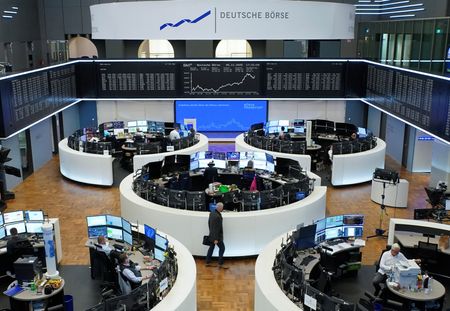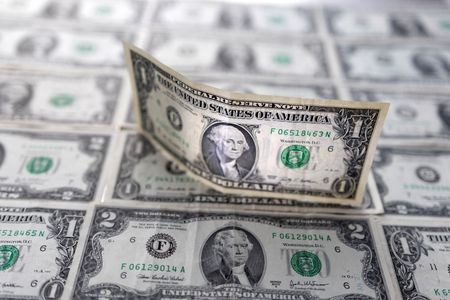By Joice Alves
LONDON (Reuters) -Sterling trimmed earlier gains on Thursday after the Bank of England kept rates unchanged but left signs it could cut rates next month after the government’s budget, and Norway’s crown recovered some ground after its central bank held rates.
The dollar edged lower as a recovery in appetite for riskier assets pulled the U.S. currency off its recent peaks.
Sterling traded 0.21% higher at $1.3080. It was 0.31 higher before the BoE decision after touching a seven-month low of $1.3011 on Wednesday. [GBP/]
Before the BoE meeting, markets were pricing a one-in-three chance of a cut, while most analysts believed the central bank would likely hold fire.
By next month, the BoE will have seen official inflation and jobs data for October and November, and will know the extent of tax increases that are widely expected in finance minister Rachel Reeves’ November 26 budget.
Reeves paved the way on Tuesday for broad tax rises to avoid a return to “austerity”, framing her second annual budget as one of “hard choices” to protect public spending while reducing Britain’s debt.
“Holding rates today was the right decision, with inflation still nearly double the 2% target. The Bank will be in a stronger position after the dust settles from the budget, armed with additional jobs and inflation data, to judge whether further easing is warranted in December,” said George Brown, Senior Economist at Schroders.
NOK RECOVERS AFTER NORGES BANK DECISION
The Norwegian crown currency was 0.2% higher against the euro at 11.71 after Norges Bank’s rate decision on Thursday. Against the dollar, it rose 0.4% to 10.16.
Norway’s central bank kept its policy interest rate on hold at 4.0% to combat inflationary pressure, as unanimously predicted by analysts in a Reuters poll, and reiterated that further easing was likely in the year ahead.
Norges Bank began the current easing cycle in June and cut the policy rate again in September.
Elsewhere, the dollar index, measuring the U.S. currency against six peers, fell 0.20% to 99.91, after climbing on Wednesday to its highest since May 2023.
“The market was a little bit more sensitive to the improvement in risk appetite,” said National Australia Bank’s senior currency strategist Rodrigo Catril in Sydney.
In the United States, data showed services sector activity increased to an eight-month high in October as new orders grew solidly, but subdued employment pointed to lacklustre labour market conditions against the backdrop of economic uncertainty stemming from the Trump administration’s tariffs.
The dollar fell 0.26% against the yen to 153.69 yen and 0.27% against the euro to 1.1523.
(Reporting by Joice Alves in London, additional reporting by Tom Westbrook in Singapore; Editing by Gareth Jones and Timothy Heritage)












